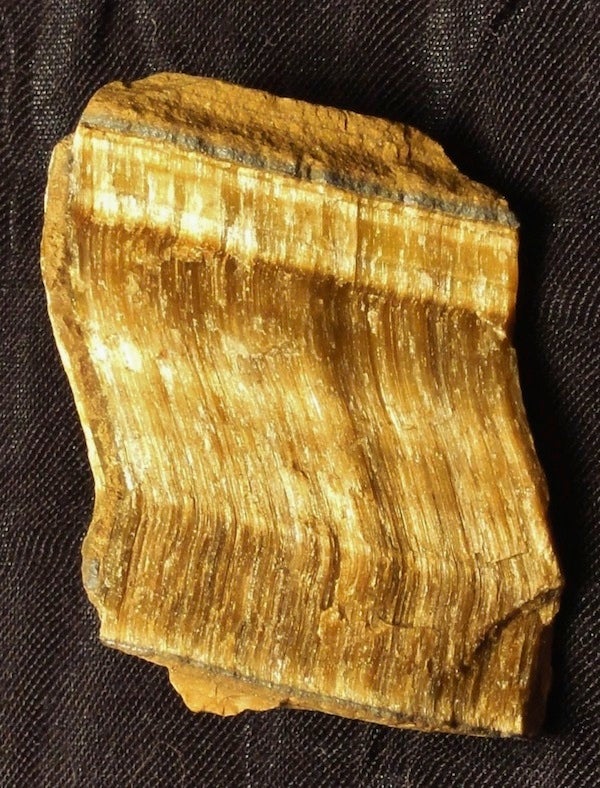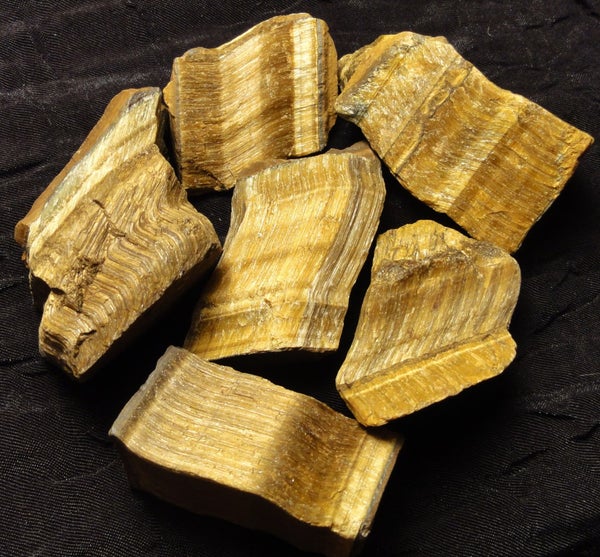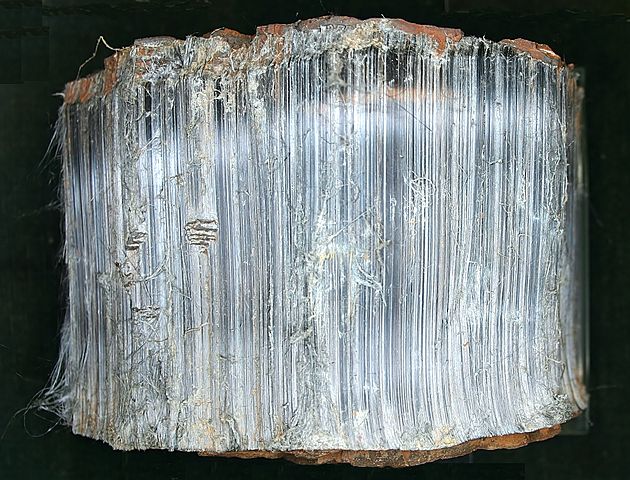This article was published in Scientific American’s former blog network and reflects the views of the author, not necessarily those of Scientific American
Heyo, it's International Tiger Day! Yeah, I know, we don't do biology around here, but that's okay - I've got just the rock for the occasion.
A raw bit of Tiger's Eye! I'll bet you've seen this polished. Can you believe this little piece of quartz used to be worth half an ounce of gold per carat in the 1870s? Now you can get it for a song, because we found abundant quantities of it in South Africa, and it's been abundant ever since.

Unpolished Tiger's Eye for your viewing pleasure.
On supporting science journalism
If you're enjoying this article, consider supporting our award-winning journalism by subscribing. By purchasing a subscription you are helping to ensure the future of impactful stories about the discoveries and ideas shaping our world today.
I find this stuff magical. That might be because I got my first piece from a magic trick: Joe Wilcox, who owned a shop selling all sorts of Southwestern jewelry and gemstones, entertained me as a child by pulling a polished chunk of it out of my ear. I was enchanted by the way it played with light, changing color and intensity like a cat's eye. I now know that's an optical effect called chatoyancy - from the French for "cat's eye," of course! - and I made you a little video to demonstrate it.
So why does quartz, which we ordinarily think of as pretty chunky stuff, arrange itself like a ripply bundle of fibers in Tiger's Eye? Turns out we were probably wrong about it for a very long time! See, we used to think that Tiger's Eye was a quartz pseudomorph after crocidolite. Sounds complicated, but I can explain. Here's a piece of crocidolite, aka blue asbestos:
Remarkably similar, aren't they just? Crocidolite forms in iron formations that have been metamorphosed, and that's where we find Tiger's Eye, too. Ferdinand Wibel, a German mineralogist who studied the stuff back in the late 1800s, decided that silica must have gotten all up in the crocidolite and replaced the fibers, a lot like what happens to bones and shells in fossils. The silica - quartz - came upon the scene after the crocidolite had formed and copied its fibrous nature as it replaced it. Iron oxides stained the quartz brown. Simple! So simple that we didn't question his conclusions for over a century.
I mean, it looked obvious, right? The stuff was nearly pure SiO2. The specific gravity and its hardness were totally quartz. And yet, quartz generally doesn't do fibers, so what else could've happened except it taking on the form of the crocidolite it was replacing? Classic pseudomorph!
Early this century, Peter Heaney and Donald Fisher grabbed themselves some Tiger's Eye so they could study the properties of pseudomorphs. Only, when they got it under the scanning electron microscope and looked at it more closely than anyone else had done, they didn't see a pseudomorph. They thought that the mostly likely quartz variety to replace the crocidolite would be chalcedony, but that's not what they found. The quartz, rather than being fibers, actually formed as tiny columns. And the famous chatoyancy wasn't being caused by the quartz itself, but by tiny inclusions of crocidolite fibers within the quartz columns. The reflective effect followed the crocidolite, not the quartz. The textures they saw under the microscope led them to believe they weren't seeing a pseudomorph at all, but the result of many epidodes of cracking and sealing. Basically, as tectonic stresses cracked quartz-rich veins, crocidolite fibers would grow from wee crocidolite grains in the surrounding rock. Quartz columns growing from the opposite side would then basically wrap the fibers up. The whole process would happen time and again, until you had veins of Tiger's Eye and its sibling Hawk's Eye, which has more unweathered crocidolite and thus is a lovely, shimmery blue.
The color of Tiger's Eye does indeed come from the fact that the crocidolite has weathered and is now coated with iron oxides and hydroxides. But the chatoyancy was lost if the oxides replaced the crocidolite fibers completely, as they would in a typical pseudomorph. It's not yet clear if Tiger's Eye forms simultaneously with Hawk's Eye, or is formed when Hawk's Eye gets an oxidizing bath in a later event.
Do you have a piece of Tiger's Eye or Hawk's Eye? Go grab it. Tip it under a light and watch the cat's eye effect play through its depths. Now consider this wonderful fact: "The variable chatoyancy that is the gem's signature actually is a record of the parent rock's structural path during past tectonic events." Your beautiful stone has seen some metamorphic and tectonic wonders, and it's telling you all about them!
There's still some disagreement over whether Heaney and Fisher were right, or if Wibel's original ideas will actually prove correct after more study. But two things are never in doubt: Tiger's Eye is a completely enchanting gemstone, and it still has a lot to tell us about the earth it came from.
References:
Gutzmer et al (2004): New Interpretation of the Origin of Tiger's-Eye: Comment and Reply. Geology 32.1 e44-e45
Heaney, Peter J. and Fisher, Donald M. (2003): New Interpretation of the Origin of Tiger's-Eye. Geology, v. 31, p. 323-326




